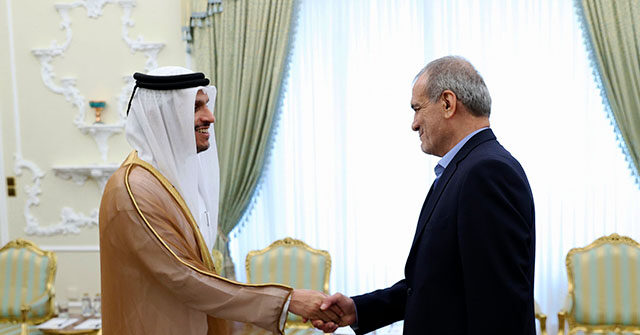Iranian President Masoud Pezeshkian has articulated that his recent discussions in Qatar have resulted in a “good understanding” concerning access to $6 billion in Iranian assets. This financial release comes in the wake of a prisoner exchange deal brokered by President Joe Biden in September 2023, during which the U.S. granted a sanctions waiver to facilitate the transfer of previously frozen funds to Qatar’s central bank. The assets had been held in South Korean banks until recently, and their release has sparked significant controversy and debate regarding its implications for U.S.-Iran relations and regional stability in the Middle East.
The Biden administration maintains that Iran’s access to the funds will be strictly limited and designated solely for humanitarian purposes. Critics, however, argue that this position overlooks the fungibility of money, which allows for the possibility that funds earmarked for humanitarian goods could free up other financial resources for Iran’s military and paramilitary initiatives. This concern is compounded by the nature of the financial transaction, which some observers have labeled a ransom for the five prisoners released during the negotiations. The administration faced significant backlash for the size of the cash transfer, with many Americans questioning the strategic implications of such a payment to an often adversarial government.
Despite the U.S. administration’s insistence that the funds will be controlled and served only for humanitarian needs, Iranian officials have begun to push back against this narrative. Following the intense criticism of the $6 billion payment, Iranian officials, including Pezeshkian, asserted that the funds could not be retracted by the U.S. and that Iran would exercise its rights to utilize the resources as it sees fit. This hardening stance indicates that Tehran is eager to quash any perceptions of constraints placed upon its financial avenues amid a precarious geopolitical landscape.
Further complicating the situation, Secretary of State Antony Blinken has claimed that Iran has always had access to the frozen funds for humanitarian purposes. He suggested that any limitations in accessing these resources previously stemmed from technicalities rather than any substantive U.S. blockages. Such claims have drawn skepticism from experts and observers who question the veracity of this narrative in the context of Iran’s broader activities in the region. Reports have also emerged indicating an informal understanding between the Biden administration and the Qatari government to limit Iran’s access to the funds following the tragic Hamas attacks on Israeli civilians on October 7, 2023.
Pezeshkian’s visit to Qatar also involved discussions with various Middle Eastern leaders, including meetings with Saudi Foreign Minister Prince Faisal bin Farhan and representatives from the Hamas organization. He indicated a willingness and readiness to address regional disputes, with an eye toward greater cooperation among Middle Eastern states. This approach suggests Iran’s strategy of forming alliances and fostering solidarity with neighboring countries, particularly in light of ongoing conflicts such as the war in Gaza and the tensions surrounding Lebanon.
In summary, the negotiations between Iran and Qatar concerning the $6 billion in frozen assets signify more than a financial transaction; they reflect deeper geopolitical dynamics in the Middle East. Iran’s assertion of its rights to these funds, alongside a broader agenda of fostering unity among regional powers, demonstrates its intention to leverage the situation to enhance its position within the tumultuous political landscape. As the Biden administration navigates criticism and concern regarding the potential fallout from this financial release, the implications for regional security and Iranian influence remain points of contention in ongoing discussions about U.S. foreign policy in the Middle East.

